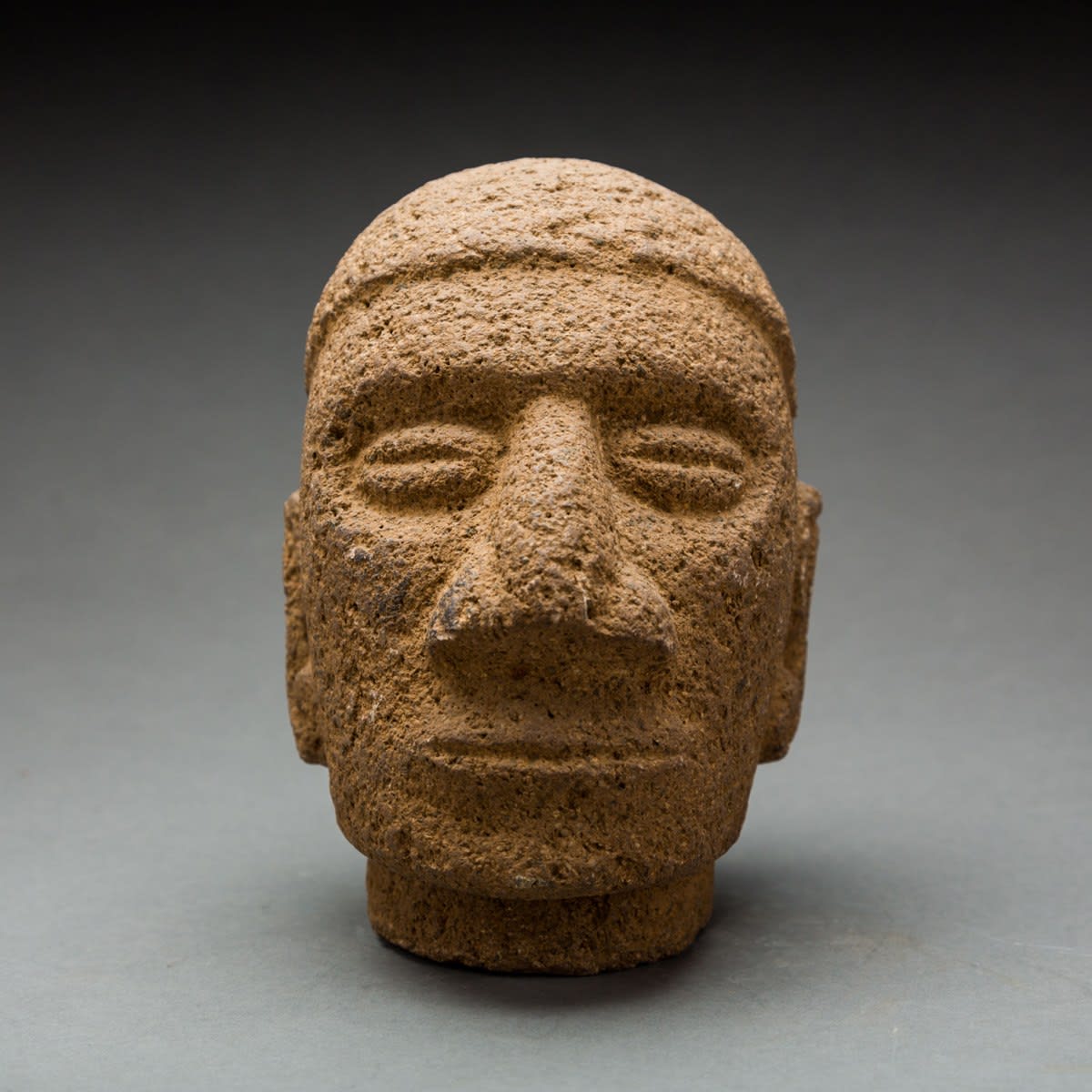Basalt Trophy Head, 100 CE - 500 CE
Basalt
11.4 x 16.5 x 14 cm
4 1/2 x 6 1/2 x 5 1/2 in
4 1/2 x 6 1/2 x 5 1/2 in
PF.2968
Further images
This basalt stone head is sculpted in a simple manner with incision lines. Such elegant simplicity attributes the stone head the crucial qualities such as a sense of presence and...
This basalt stone head is sculpted in a simple manner with incision lines. Such elegant simplicity attributes the stone head the crucial qualities such as a sense of presence and weight. Estranged from the body, the stone head's stoic facial features create an esoteric mystery. Compared to other basalt trophy heads this sculpted head is smaller--perhaps it is a head of a young man. The stone head wears a simple flat cap, which has a small round top at the crown. Such basalt sculpture of a young man is a symbol of human sacrifice, which was a common practice in Ancient Costa Rica. During this period, people took trophy heads in battles for human sacrifice to please the God and to maintain agricultural fertility. Because of the strong belief in human sacrifice pleasing the God, conquests and wars became the fight to obtain victims for human sacrifice. The victims for the ceremony had to be perfect and flawless, and often-young boys were selected for their impeccable appearance and purity. The basalt sculpture head of a young man, thus, symbolizes the human offering's unblemished perfection. As the young man was the sacred and clean subject of a ritual, the basalt sculpture of his head clearly reveals a sense of presence and perfection that was appropriate for the powerful God.







